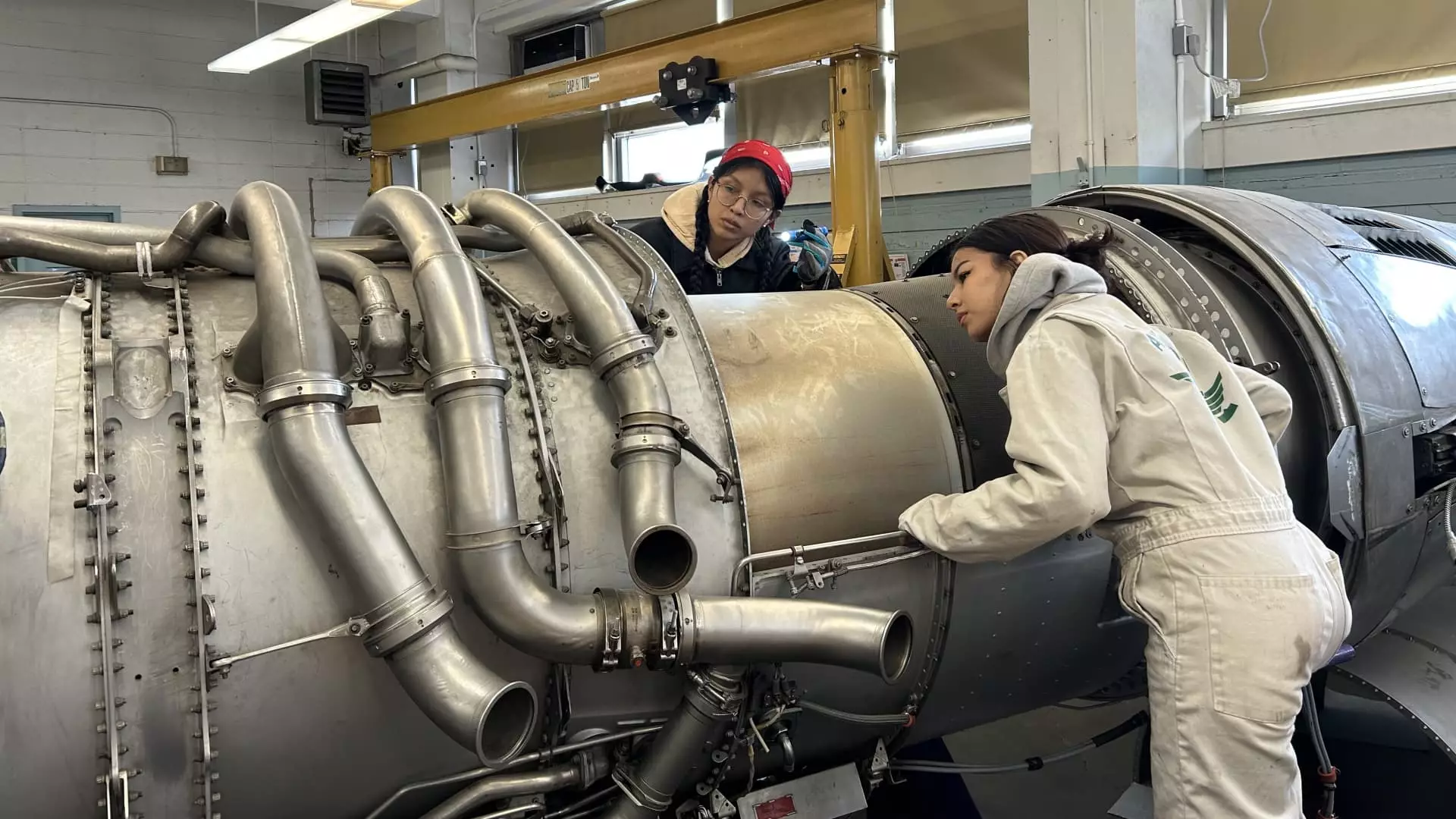In recent years, the aviation industry has been caught in a conundrum, entangled between progress and an aging workforce. Many sector leaders, including figures from American Airlines and GE Aerospace, voice concerns over a looming workforce crisis exacerbated by an aging technician demographic. The average age of certified aircraft mechanics is shockingly high at 54, with a substantial 40% nearing retirement at 60 or older. This isn’t merely data—it’s a warning bell signaling that the industry’s future reliance on highly skilled professionals is precariously unbalanced. By 2028, we may find ourselves short of 25,000 qualified technicians, revealing a reality that could stifle one of America’s most strategically essential industries.
While political leaders, including former President Trump, have waxed lyrical about reviving American manufacturing, the urgent need for skilled laborers in aviation tells a different story. The aviation sector is not merely about the patriotism associated with American-made products; it’s about the everyday safety and reliability of millions of passengers who fly in commercial aircraft. However, the industry is at risk of losing this narrative if it fails to attract a new generation of workers who will inherit the mantle of those currently preparing for retirement.
The Cost of Misplaced Focus
Manufacturing represents a mere 9% of American jobs, yet it remains elevated on a pedestal as a sector of national pride. This “fetish” for manufacturing— as highlighted by Gordon Hanson, a Harvard professor—distracts from the broader implications of neglecting worker retention and recruitment strategies in the aviation industry. The challenge is multifaceted: while it’s engaging to celebrate U.S.-based manufacturing, in reality, it is far too easy to overlook the turbulent terrain on which these goods and services depend.
Indeed, the turbulence is not confined to mechanics; it extends to air traffic controllers, another linchpin in maintaining a robust aviation system. The shortage of skilled controllers has resulted in increased safety concerns and operational limitations, putting pressure on a sector already in distress. Such massive gaps suggest that the administration’s rhetoric about revitalizing American manufacturing is nothing more than convenient posturing if not paired with actionable, rigorous solutions aimed at real worker shortages.
Industry Professionals Are Raising the Alarm
Industry experts, like American’s COO David Seymour and GE’s Chief Human Resources Officer Christian Meisner, acknowledge that while some technicians might now experience higher wages—average salaries nearing $80,000—this monetary incentive alone is insufficient to attract historically disinterested younger generations. Sarah MacLeod of the Aeronautical Repair Station Association emphasizes that more needs to be done. An increase in wages is just part of the equation; without a comprehensive overhaul of how the industry markets itself, we risk repeating the common narrative of also-rans.
The reality is that entering the aviation workforce requires not only commitment but also a considerable time investment in obtaining FAA licenses, which can take several years. Young individuals weighing their options against traditional four-year college degrees are now increasingly considering aviation as a viable career path based on the lure of competitive salaries, along with the satisfaction of engaging in a technically advanced field. There is a palpable excitement among high schoolers, such as Sam Mucciardi from Aviation High School, who tirelessly stay after class to work on planes, but this enthusiasm needs adequate support and nurturing from the industry.
A Vision for the Future: High-Tech Manufacturing
The tide is turning; the industry is recognizing the need to pivot its image from outdated stereotypes of menial labor to high-tech engagements where young professionals can thrive in sophisticated, cutting-edge environments. Companies like American Airlines are partnering with junior high schools, signaling a proactive approach to change how the aviation workforce is perceived. As Meisner from GE notes, aerospace is no longer your grandparents’ manufacturing—it involves advanced technologies and promises to reshape job expectations.
By engaging students early, industry leaders are not only anticipating a revitalized workforce but also molding a future workforce that aligns more closely with technological advancements. Faced with an impending crisis, bolstering aviation-related educational programs could be an effective means to combat the technician shortfall. Bringing awareness to the wealth of opportunities in aviation, from engine mechanics to air traffic controllers, cannot be overemphasized.
What remains to be seen is whether such initiatives can galvanize enough public interest and political support. The countdown to workforce implosion is underway, but it appears that a collaborative effort between industry, education, and government is perhaps the only surefire way to avoid an aviation disaster. The fate of the American aviation industry—and with it, the safety of countless travelers—hangs in the balance.

Leave a Reply